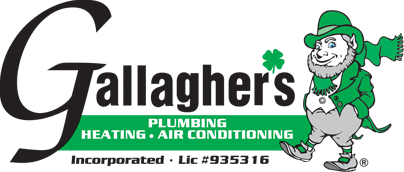
Having good air quality in your home can greatly improve your comfort. The question is: would you be better off with an air purifier or a dehumidifier? In today’s blog, we’ll help you understand the best tools for improving your home air quality.
What’s an Air Purifier?
An air purifier works to circulate the air inside of your home through a filter. This filter traps unwanted harmful pollutants to make your indoor air quality better. Depending on the specific type of air purifier that you have, it can trap a number of different airborne pollutants. These pollutants include bacteria, dust, pollen, mold spores, and dander.
There are four main types of air purifiers that you can purchase for your home. These are HEPA, Activated Carbon, UV, and Negative Ion filters.
HEPA Technology
HEPA is short for high-efficiency particulate air. This technology can remove viruses, some chemicals, and bacteria from your air.
This type of filter is comprised of fine fiber-like material that is accordion-shaped. As the air passes through a HEPA filter, unwanted airborne particles will get stuck inside the filter. While HEPA filters are great at removing airborne particles, they don’t work to remove odors, some chemicals, and gases.
Activated Carbon
Activated carbon filters are great at capturing gases, tobacco, odors, and gas emissions. The carbon inside of these filters is processed into being porous. These pores are capable of trapping unwanted particles in your air.
Carbon filters specifically remove formaldehyde, which is a chemical found in many household products like furniture upholstery, wood paneling, and carpeting. This is ideal for those who suffer from asthma and other respiratory conditions. However, activated carbon filters aren’t highly effective at removing airborne particulates like pollen, pet dander, and dust.
UV Technology
UV technology is geared towards removing germs, bacteria, and viruses from your home. These filters use a UV lamp on the air that passes through them. UV rays from the lamp damage the genetic and cellular microorganisms leading to their ultimate destruction.
It’s important for you to pair UV filters with other types of filters. Without adequate filtering, larger airborne particles will shade the smaller microorganisms when they pass under UV light. UV needs to be the final phase of your air purification system for it to be the most effective.
Negative Ion
Negative ion air purifiers utilize chemical injections to reduce the number of unhealthy airborne particles in your home. This technology adds an electron to the oxygen atoms in your home. This creates a magnet-like force that attracts unwanted airborne particles like dust and pollen.
When these unwanted particles unite with the negative ion, they fall to a solid surface, such as your carpet or furniture. With simple cleaning, you can remove these unwanted particulates from your home. However, if you fail to clean the particles will eventually return to the air.
What are the Benefits of an Air Purifier?
Air purifiers can be a great investment to remove harmful airborne pollutants and neutralize unpleasant odors throughout your home. They’ve been known to reduce your risk of airborne disease and enhance your sleep quality in the process. These are a must-have investment for homes where people have respiratory illnesses or allergies.
What’s a Dehumidifier?
A dehumidifier works to remove excess moisture from the air that is inside your home. Dehumidifiers are perfect for keeping the relative humidity inside of your home to 30 to 50 percent. Many dehumidifiers can be automatically programmed to kick on whenever humidity levels get higher than your set relative humidity level.
What Are the Benefits of a Dehumidifier?
As your dehumidifier removes excess moisture from your indoor air, you’ll notice it has a less damp feeling. With a dehumidifier, you can deal with musty, damp smells. Additionally, you can prevent mold and mildew with a lower level of humidity.
If dust mites have created trouble in your home, a dehumidifier can help. Dust mites thrive in a moisture-rich environment. When you reduce the moisture in your air, it can reduce the number of dust mites that thrive.
Dehumidifiers are typically great for those who live in overly humid regions of the country. This technology will help to keep your indoor air bearable without having to run your air conditioner on a consistent basis. This will especially improve home comfort for anyone with respiratory issues.
Should You Invest in Both?
So, air purifier or dehumidifier? It’s not uncommon for newbies to think that air purifiers and dehumidifiers perform the same task. However, you now know better. Each provides its own unique benefits to your home. If you don’t have either of these systems in your home, you should highly consider investing in both of them.
Not only will an air purifier work to enhance your indoor air quality, but a dehumidifier can help to make your home a more comfortable environment for your family.
Reliable Air Quality Services
Gallagher’s Plumbing, Heating and Air offers reliable air quality services for the entire North Valley region. Contact us today to get the professional assistance that you need.


 uys
uys